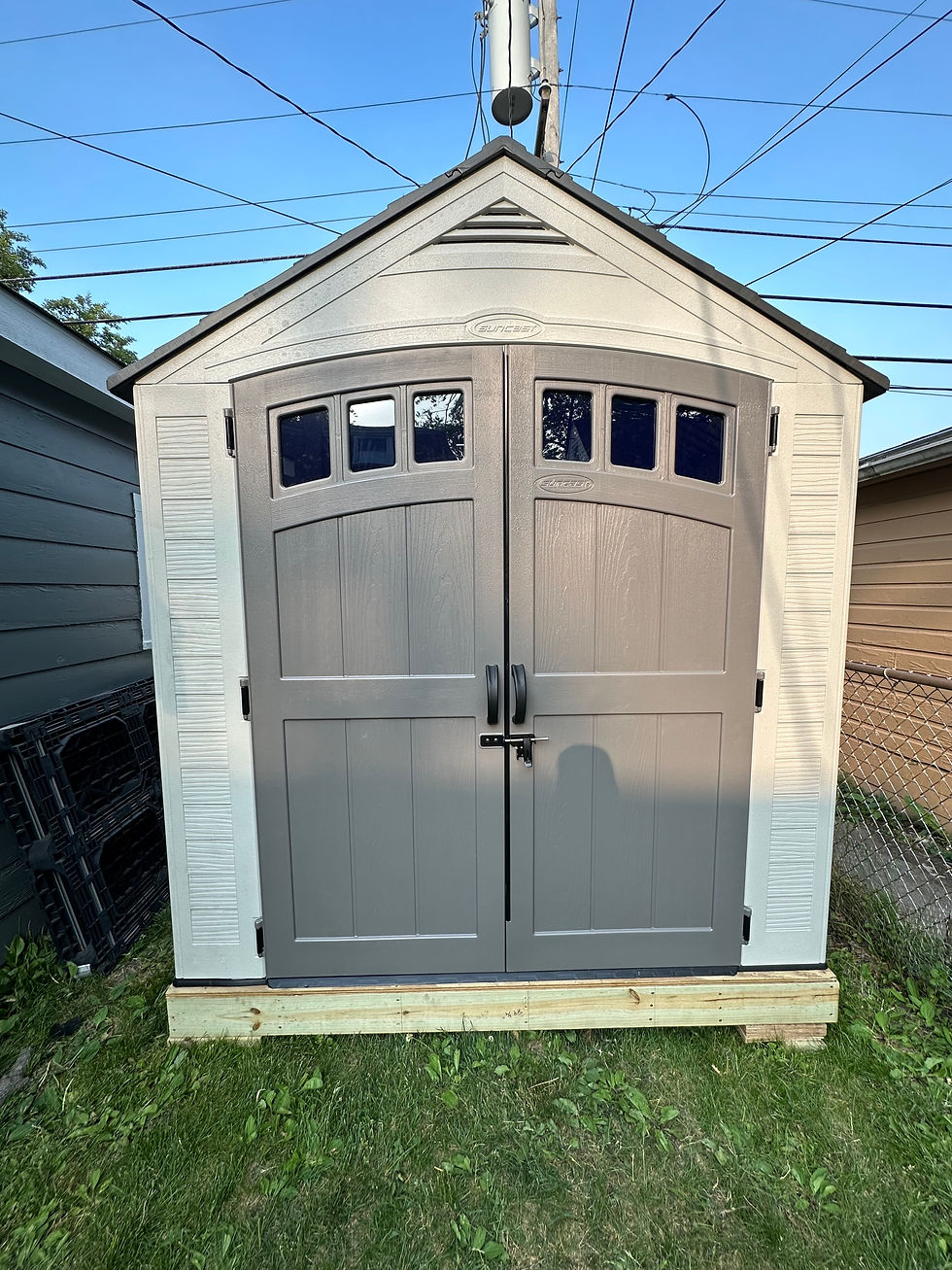Crafting Timeless Outdoor Structures: A Guide to Longevity and Durability!
- Eli Lopez
- Mar 5, 2024
- 3 min read
Updated: Apr 8, 2024
Introduction: In the realm of home improvement, the creation of outdoor structures transcends mere functionality, evolving into a testament of craftsmanship and enduring beauty. From sheds to decks, detached garages to greenhouses, each structure embodies the promise of longevity and resilience against the elements. In this sophisticated guide, we delve into the art of building outdoor structures that stand the test of time, offering insights and strategies to ensure they endure for many years to come.
Foundations of Strength: Choosing the Right Materials At the heart of every enduring outdoor structure lies a foundation of strength built upon carefully selected materials. When embarking on a construction project, opt for materials renowned for their durability and resistance to weathering. For example, pressure-treated lumber or rot-resistant woods such as cedar or redwood are ideal choices for decks, sheds, and detached garages, offering protection against moisture, decay, and insect damage. Likewise, consider utilizing galvanized or stainless steel hardware to safeguard against corrosion and ensure structural integrity. By investing in quality materials from the outset, you lay the groundwork for a structure that will withstand the passage of time with grace and resilience.
Engineering Excellence: Designing for Structural Integrity Beyond the selection of materials, the design and engineering of outdoor structures play a crucial role in ensuring longevity and durability. Prioritize structural integrity by consulting with experienced architects or engineers to develop detailed plans that account for factors such as load-bearing capacity, wind resistance, and seismic activity. Incorporate reinforcements such as diagonal bracing, cross beams, and anchor bolts to fortify the framework against forces of nature. Additionally, adhere to local building codes and regulations to ensure compliance with safety standards and enhance the longevity of the structure. By employing sound engineering principles and meticulous planning, you lay the groundwork for a structure that will endure for generations to come.
Weathering the Elements: Implementing Protective Measures As outdoor structures are exposed to the elements year-round, it is essential to implement protective measures to mitigate the effects of weathering and prolong their lifespan. Apply high-quality sealants, stains, or paints to wooden surfaces to shield against moisture, UV rays, and fungal growth. Install proper drainage systems to divert water away from the foundation and prevent pooling or erosion. Consider incorporating features such as overhangs, gutters, and ventilation to enhance airflow and minimize moisture buildup. Additionally, regularly inspect and maintain the structure, addressing any signs of wear, damage, or deterioration promptly. By taking proactive steps to protect your outdoor structures from the elements, you ensure they remain resilient and functional for years to come.
Sustainable Solutions: Embracing Eco-Friendly Practices In an era of increasing environmental consciousness, incorporating sustainable practices into the construction and maintenance of outdoor structures is both prudent and responsible. Explore eco-friendly building materials such as reclaimed wood, recycled plastic lumber, or composite decking, which offer durability and reduce environmental impact. Opt for energy-efficient design features such as solar panels, rainwater harvesting systems, or passive heating and cooling strategies to minimize utility costs and carbon footprint. Embrace principles of permaculture and regenerative design by integrating green roofs, rain gardens, or edible landscaping into the structure's surroundings. By adopting sustainable solutions, you not only contribute to the preservation of the environment but also create outdoor spaces that thrive in harmony with nature for years to come.
Cultivating Care: Maintenance and Preservation The key to ensuring the longevity of outdoor structures lies in regular maintenance and diligent preservation efforts. Implement a routine maintenance schedule that includes tasks such as cleaning, sealing, lubricating, and inspecting various components of the structure. Replace worn or damaged materials promptly, and address any structural issues or safety hazards as soon as they arise. Consider investing in annual professional inspections to identify potential problems and proactively address them before they escalate. Educate yourself about the specific care requirements of each type of structure, from decks to greenhouses, and implement appropriate maintenance practices accordingly. By cultivating a culture of care and attention to detail, you can extend the lifespan of your outdoor structures and enjoy their beauty and functionality for many years to come.

Conclusion: Building outdoor structures such as sheds, decks, detached garages, pole barns, and greenhouses is an endeavor that requires careful consideration, planning, and execution. By prioritizing durability, resilience, and sustainability throughout the construction process, you can create structures that withstand the test of time and enhance the beauty and functionality of your outdoor living spaces for generations to come. With a commitment to quality craftsmanship, proactive maintenance, and eco-friendly practices, you can ensure that your outdoor structures remain steadfast companions on your journey of home and garden improvement.



Comments